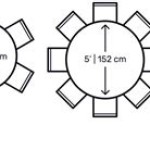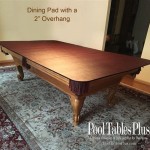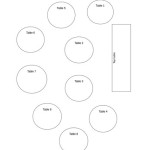```html
Light Table for Kids: Illuminating Learning and Play
Light tables, once primarily confined to professional settings like architecture and design studios, have found a vibrant new role in the realm of children's education and play. These illuminated surfaces offer a unique and engaging platform for exploration, sensory experiences, and skill development. By providing a brightly lit backdrop, light tables enhance the visibility of colors, textures, and shapes, inviting children to interact with materials in novel and captivating ways. This article will delve into the multifaceted benefits of light tables for children, examining their impact on creativity, cognitive development, and sensory exploration.
Enhancing Creativity and Artistic Expression
Light tables serve as a powerful catalyst for creative expression, transforming ordinary activities into extraordinary artistic endeavors. The backlit surface intensifies colors and allows for layering of materials, enabling children to create visually stunning artwork with ease. Translucent materials, such as colored cellophane, transparent gems, and water beads, become vibrant canvases when placed on a light table. Children can experiment with color mixing, pattern creation, and light manipulation, fostering their aesthetic sensibility and artistic skills.
The use of light tables extends beyond traditional art materials. Natural elements like leaves, flowers, and branches can be arranged and illuminated, transforming them into breathtaking works of art. Similarly, everyday objects like buttons, beads, and small toys can be used to create intricate designs and imaginative scenes. The light table encourages children to think outside the box, explore different materials, and express their unique artistic vision. This open-ended approach to art fosters a sense of experimentation and discovery, empowering children to take risks and develop their creative confidence.
Activities involving drawing and tracing are also enhanced on a light table. Children can trace intricate designs, create their own stencils, or simply practice their drawing skills with improved visibility. The bright light makes it easier to see fine details and lines, promoting accuracy and precision. Furthermore, the novelty of drawing on a light table can spark a child's interest in art and encourage them to engage in drawing activities for longer periods of time.
Fostering Cognitive Development through Play
Light tables are not just tools for artistic expression; they also play a significant role in fostering cognitive development. The engaging nature of the light table encourages children to explore concepts related to math, science, and literacy through hands-on activities. The illuminated surface provides a stimulating learning environment that captivates children's attention and promotes active participation.
Mathematical concepts like counting, sorting, and pattern recognition can be explored using translucent manipulatives on a light table. Children can sort colored gems by shape or size, count objects arranged in different patterns, or create their own mathematical equations using illuminated number tiles. The visual clarity of the light table makes these activities more engaging and accessible, helping children to grasp fundamental mathematical concepts with ease.
Science exploration is also greatly enhanced by the use of a light table. Children can observe the properties of light and shadow, experiment with color mixing, and explore the natural world through illuminated specimens. For example, they can examine the veins of a leaf, the structure of a flower petal, or the intricate patterns of a butterfly wing. The light table provides a unique perspective that allows children to appreciate the beauty and complexity of the natural world.
Literacy skills can be developed through a variety of light table activities. Children can practice letter recognition using illuminated alphabet tiles, create words and sentences using translucent letter beads, or trace letters and words on transparent writing boards. The bright light makes it easier to see the letters and words, which is particularly helpful for children who are just learning to read and write. Furthermore, the novelty of writing on a light table can make literacy activities more engaging and enjoyable, motivating children to practice their skills.
Stimulating Sensory Exploration and Regulation
Light tables are invaluable tools for sensory exploration, providing a stimulating environment that can engage and regulate children's senses. The bright light, vibrant colors, and tactile materials used on a light table can create a multi-sensory experience that is both calming and stimulating. This is particularly beneficial for children with sensory processing differences or those who benefit from sensory integration activities.
The tactile nature of the materials used on a light table encourages children to explore different textures and sensations. Water beads, sand, rice, and play dough all provide unique tactile experiences that can be both calming and stimulating. Children can manipulate these materials, creating patterns, building structures, or simply enjoying the sensation of the materials on their hands. The light table enhances the visual appeal of these materials, making the sensory experience even more engaging.
The visual stimulation provided by the light table can also be beneficial for children with sensory sensitivities. The bright light can help to focus their attention and reduce distractions. The vibrant colors can be visually stimulating and can help to improve mood and energy levels. By providing a controlled sensory environment, the light table can help children to regulate their senses and feel more calm and focused.
Activities involving light and shadow can also be used to promote sensory exploration and regulation. Children can create shadow puppets, experiment with different light sources, and explore the effects of light and shadow on different materials. These activities can be both visually stimulating and calming, helping children to regulate their senses while engaging in creative play.
Furthermore, light tables are often incorporated into therapeutic settings to aid in sensory integration therapy. Therapists use light tables to create specific sensory experiences that help children to develop their sensory processing skills and improve their ability to regulate their emotions and behavior. The light table provides a safe and controlled environment for children to explore their senses and develop their self-regulation skills.
In conclusion, light tables offer a multitude of benefits for children, ranging from fostering creativity and cognitive development to stimulating sensory exploration and regulation. Their versatility and engaging nature make them a valuable tool for educators, parents, and therapists alike. By providing a vibrant and stimulating learning environment, light tables empower children to explore, experiment, and discover the world around them in new and exciting ways. The integration of light tables into various learning environments underscores their potential to enhance the educational and developmental journey of children across diverse learning styles and abilities.
```
Kids Light Table The What Why And How Katanabana

Homemade Easy Low Cost Light Table Tinkerlab

Space Saver Color Changing Light Table At Lakeshore Learning

Childcraft Light Table Review

13 Amazing S To Diy Light Table For Kids

Light Table Gift Guide For Kids And Next Comes L Hyperlexia Resources

Wooden Light Table Louise Kool Galt

Homemade Easy Low Cost Light Table Tinkerlab

Easy Diy Light Table Tutorial Step By Directions

How To Make A Light Table Or Board In Record Time








